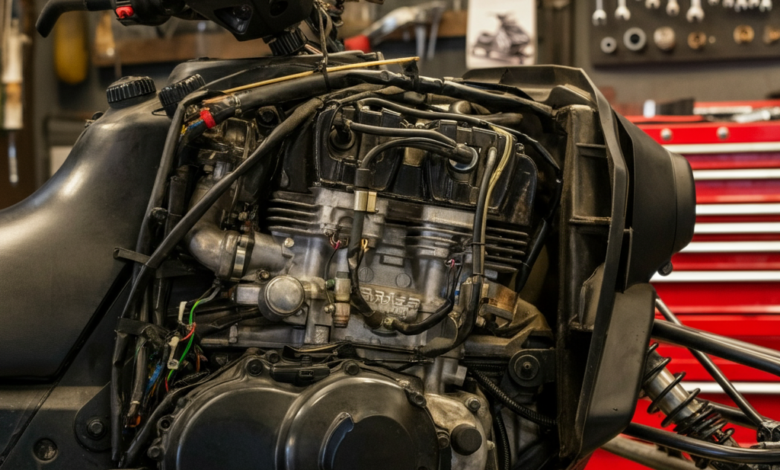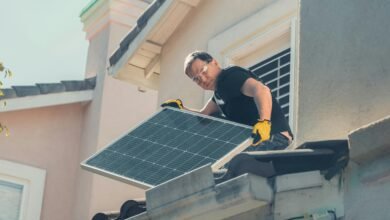Comprehensive Guide to the 1996 Arctic Cat ZR 580 EFI Fuel Rail

The Arctic Cat ZR 580 EFI holds a special place in the hearts of snowmobiling enthusiasts. Known for its excellent performance and reliable engine, this classic snowmobile continues to serve riders both for leisure and competitive sports. However, like any high-performance machine, proper maintenance is crucial to keep it running smoothly. At the heart of its Electronic Fuel Injection (EFI) system lies the fuel rail, a vital component that ensures your ZR 580 runs efficiently.
This post is your detailed guide to understanding, maintaining, and even upgrading the 1996 Arctic Cat ZR 580 EFI fuel rail. Whether you’re an Arctic Cat enthusiast, a mechanic, or a DIY repair hobbyist, we’ve got everything you need to know.
Understanding the Fuel Rail System
The fuel rail is a critical component in the EFI system of the ZR 580. Acting as the “bridge” between the fuel pump and injectors, the fuel rail ensures that fuel is distributed evenly and at the correct pressure to each injector. This precision allows for optimal combustion, which directly impacts performance, fuel efficiency, and engine reliability.
Key Features of the 1996 Arctic Cat ZR 580 EFI Fuel Rail:
- Material: Built from high-strength aluminum to withstand varying temperatures and pressures.
- Functionality: Maintains fuel pressure to the injectors for smooth engine operation.
- Design: Compact and lightweight, as is typical in high-performance snowmobiles.
Understanding this system is essential for proper troubleshooting and servicing.
Common Issues with the Arctic Cat ZR 580 EFI Fuel Rail
While the ZR 580 has stood the test of time, its fuel rail may develop issues like any aging component. Here are some common problems to look out for:
- Fuel Leakage: Over time, seals and connections can degrade, leading to leaks.
- Clogged Injectors: Residue buildup in the fuel rail can prevent proper fuel flow to the injectors.
- Pressure Drops: A failing pressure regulator or damaged fuel rail can result in inconsistent fuel delivery.
- Corrosion: Exposure to moisture can lead to rust and corrosion, especially if the sled is stored improperly.
If any of these issues occur, your ZR 580 may experience poor engine performance, difficulty starting, or erratic idling.
Step-by-Step Inspection Guide
Regular inspections can help you catch minor issues before they become major problems. Here’s how to inspect your fuel rail:
- Prepare Your Tools
-
-
- Socket wrench
- Flat-head screwdriver
- Safety gloves and goggles
-
- Disconnect the Battery
-
-
- Always disconnect the battery to avoid electrical hazards.
-
- Access the Fuel Rail
-
-
- Remove the sled’s hood and locate the fuel rail within the EFI system.
-
- Check for Visible Damage
-
-
- Inspect the rail for cracks, rust, or signs of fuel leaks.
-
- Test Fuel Pressure
-
-
- Use a fuel pressure gauge to check that the rail maintains the recommended pressure (consult the ZR 580 service manual for specifics).
-
- Inspect Connections
-
-
- Examine the seals and connections for wear and tear.
-
By thoroughly inspecting the fuel rail, you can identify and address potential problems early.
Fuel Rail Removal and Installation
Removal Process
- Relieve Fuel Pressure
-
-
- Start by relieving pressure in the fuel system by opening the pressure relief valve.
-
- Disconnect Fuel Lines
-
-
- Carefully detach the fuel lines connected to the rail. Be prepared for minor fuel spillage.
-
- Unbolt the Rail
-
-
- Using a socket wrench, remove the bolts securing the fuel rail to the engine.
-
- Remove Injectors (if necessary)
-
-
- Gently pull the injector clips to disconnect them from the rail.
-
Installation Process
- Position the New Rail
-
-
- Align the replacement fuel rail and secure it with the bolts.
-
- Reconnect Fuel Lines and Injectors
-
-
- Attach the fuel lines and injector clips securely.
-
- Check for Leaks
-
-
- Reconnect the battery, start the engine, and inspect for any leaks or abnormal operations.
-
- Test Performance
-
-
- Perform a quick test ride to ensure everything is functioning correctly.
-
Fuel Rail Maintenance and Cleaning
To extend the life of your fuel rail, regular cleaning is essential.
Cleaning Tips:
- Use a carburetor cleaner to safely remove fuel residue.
- Avoid using abrasive tools that could scratch the aluminum rail.
- Flush the entire fuel system annually, especially before winter storage.
Routine maintenance not only prevents costly repairs but also ensures consistent performance.
Troubleshooting Tips and Tricks
If you’re still encountering issues with your fuel rail, try these tips:
- Double-Check Connections: Loose or improperly connected fuel lines can mimic more serious problems.
- Replace O-rings: Aging O-rings at the injector seals are a common source of leaks.
- Upgrade to Ethanol-Compatible Parts: If you use ethanol-based fuel, ensure your rail’s materials are compatible.
For persistent issues, consult a snowmobile service manual or a trusted mechanic.
Upgrading the Fuel Rail for Performance
For enthusiasts looking to enhance performance, upgrading the fuel rail can make a significant difference. Consider the following options:
- Aftermarket High-Flow Rails: These improve fuel delivery for modified or high-performance engines.
- Fuel Pressure Regulators: Upgrading to an adjustable regulator lets you fine-tune the pressure for optimal engine performance.
- Ethanol-Resistant Coatings: Protect the rail from long-term ethanol-induced corrosion.
Make sure to match any upgrades with compatible injectors and EFI settings for seamless integration.
Keep Your ZR 580 Running Like a Dream
The fuel rail in your 1996 Arctic Cat ZR 580 EFI might not be the most glamorous component, but it’s a critical part of keeping your sled in peak condition. Regular inspections, proper maintenance, and knowing how to troubleshoot common issues will ensure reliable performance for years to come.



